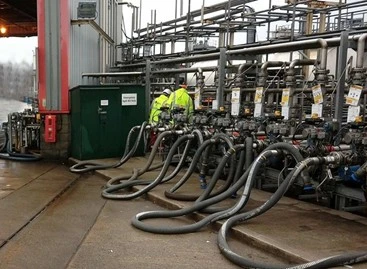
Drainage Systems: Development of an Asset Management Strategy
Client
Anonymous, Top Tier COMAH Installation with 6 UK Assets and 2300+
As a leading operator of chemical storage and distribution facilities, demonstrating compliance with HSE guidance for secondary containment and the prevention of groundwater pollution from solvents were top priorities for our client.
Our team proposed a phased management and delivery strategy to demonstrate that below-ground drainage assets were compliant. Our inspections highlighted where remedial works would be required, and recommendations for repairs, refurbishment or replacement options.
Elements within the drainage systems were identified as critical to the efficiency and compliance of the overall system including:
- Pumping chamber pits
- Attenuation tanks


The Solution
The Arthian team conducted a series of works, which included:
- Desk Study: undertaken to understand the drainage system to be inspected, including a review of archive drawings and previous inspection reports
- Site Walkover: undertaken to verify the information from the desk study and highlight visible changes since the previous inspection. Potential enabling requirements are highlighted for inspection works to be completed.
- Inspection Enabling Works: emptying of manholes and attenuation tanks, jet cleaning and removal of debris within chambers and pipes, enabling works to facilitate entry to chambers
- Inspection Works: visual inspection from grade, review of CCTV survey of drainage lines and chambers, man entery to allow for close visual inspection of chamber conditions, identified differences in existing site drainage layouts
- Reporting: Upon completion of inspection works, an inspection report, including the manhole schedule and defects identified, update to site drainage plans to reflect on site findings
- Recommendations: priority repairs are determined based on site operation consequences and environmental risks
In addition to the chamber pits and attenuation tanks, Arthian looked to identify the risk, likelihood and consequence of the failure of ancillary equipment including:
- Pumps (high likelihood of failure)
Consequence: pump failure would restrict the ability to move effluent from the storage tanks to discharge, reducing capacity within the site attenuation - Valves (low likelihood of failure)
Consequence: valve failure would result in the inability to shut off sections of the system to reduce contamination build-up in the system.
We produced a series of recommendations, which included:
- Valve Replacement: The engineering team recommended the replacement of a defective valve in chamber pit 1 to enable the system to be closed in case of a product spill within the concrete hardstanding area. This would prevent contaminants from entering the downstream storage tank, containing the product in a smaller area, resulting in less spread and easier remediation
- PVC Pumping Chamber Leak: Upon drainage, groundwater was entering through defective concrete in the cover slab. Should the chamber be full of effluent, this would be released to groundwater resulting in potential environmental damage. Further investigation is required to understand the extent of the damage with appropriate remedial work carried out based on the findings.
- Concrete Spalling: recommended that defective concrete within the mixing chamber was repaired to ensure the integrity of the chamber was maintained. We provided repair specifications to achieve this.
- Piping Collapse: The outfall pipe to the pump house has collapsed resulting in having to discharge to an adjacent chamber pit. The team recommended further investigation be carried out via CCTV to understand the extent of the pipe’s collapse. This will allow for remediation or for a long-term solution to allow direct connection to the pump house

Our Latest Projects
Get in Touch
We’d love to hear from you – whether you have a question, a project in mind, want to explore job opportunities, or just want to say hello.

